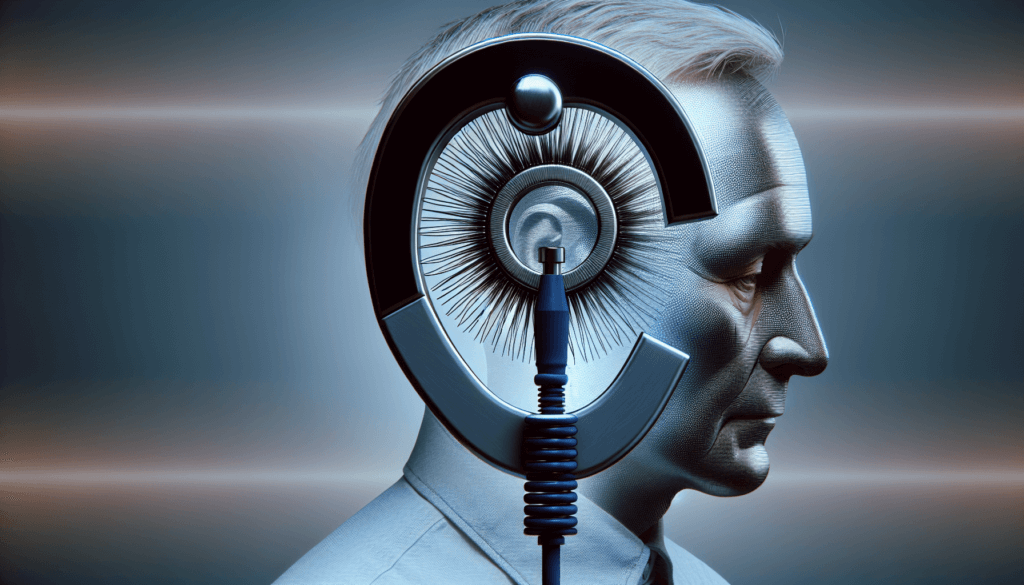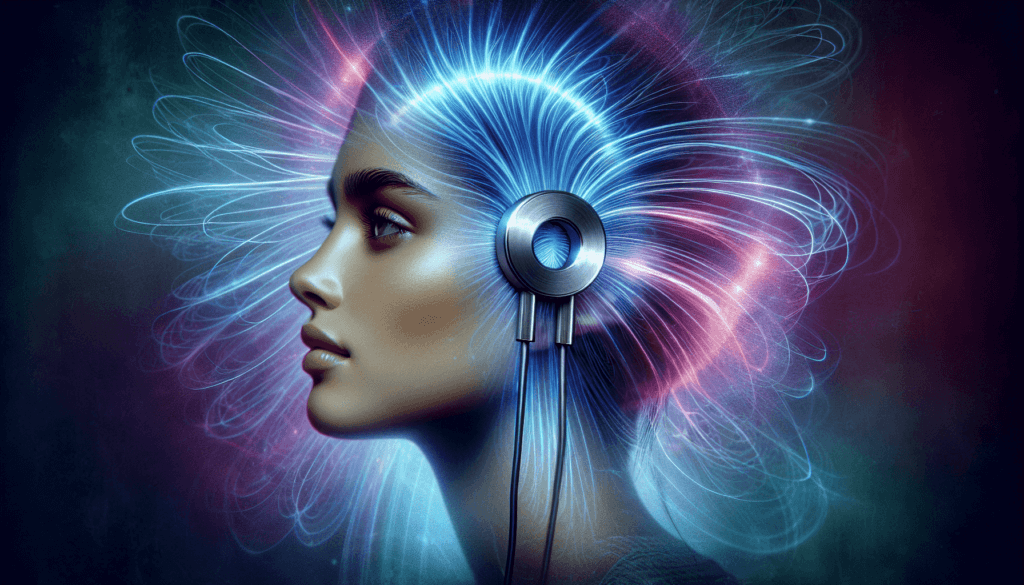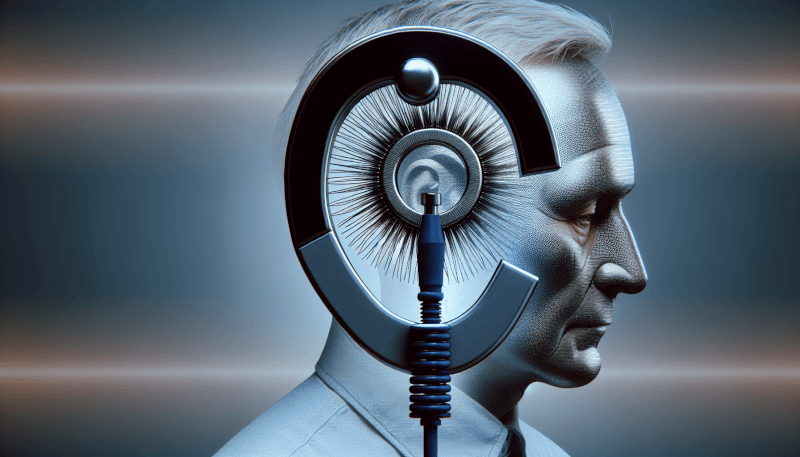Have you ever wondered if there is an alternative to traditional treatments for depression? Well, look no further! In this article, you will be introduced to the intriguing concept of Electromagnetic Depression Therapy. This innovative treatment method utilizes electromagnetic currents to stimulate specific areas of the brain, offering potential relief from the debilitating effects of depression. So, sit back, relax, and discover a whole new approach to combating this mental health condition.
What is Electromagnetic Depression Therapy
Electromagnetic Depression Therapy is a type of treatment that uses electromagnetic fields to target and stimulate specific areas of the brain to alleviate symptoms of depression. It is a non-invasive procedure that has gained popularity as an alternative or complementary treatment for individuals experiencing treatment-resistant depression or those seeking non-medication options.
Definition
Electromagnetic Depression Therapy, also known as electromagnetic brain stimulation or electromagnetic neuromodulation, involves the use of electromagnetic fields to stimulate specific areas of the brain. This stimulation aims to regulate brain activity, promote neuroplasticity, and alleviate symptoms of depression.
How does it work
Electromagnetic Depression Therapy works by using electromagnetic fields to induce electrical currents in targeted areas of the brain. These electrical currents stimulate the neurons in the brain, promoting the release of neurotransmitters and enhancing the communication between brain regions. By modulating brain activity, electromagnetic stimulation can help regulate mood, reduce depressive symptoms, and promote overall mental well-being.
Benefits of Electromagnetic Depression Therapy
Non-invasive
One of the significant benefits of Electromagnetic Depression Therapy is that it is a non-invasive treatment option. Unlike other forms of brain stimulation techniques, such as electroconvulsive therapy (ECT), electromagnetic therapy does not require any surgical procedures or anesthesia. This makes it a more comfortable and safer option for individuals seeking treatment for depression.
Few side effects
Another advantage of Electromagnetic Depression Therapy is the minimal side effects associated with the treatment. Unlike antidepressant medication, which can cause various side effects, including nausea, drowsiness, or sexual dysfunction, electromagnetic therapy has a low risk of adverse reactions. Common side effects may include mild headache or scalp discomfort during or after the treatment, but these typically subside on their own without causing any significant discomfort.
Promotes neuroplasticity
Electromagnetic Depression Therapy has been found to promote neuroplasticity, which is the brain’s ability to reorganize itself and form new connections between neurons. The stimulation of specific brain regions through electromagnetic fields can enhance neuroplasticity, allowing the brain to adapt and rewire itself. This can be particularly useful for individuals with depression, as it may help alleviate symptoms by rewiring neural networks associated with mood regulation.
Targeted treatment
One of the key benefits of Electromagnetic Depression Therapy is its ability to precisely target specific regions of the brain. Different techniques of electromagnetic stimulation, such as Transcranial Magnetic Stimulation (TMS), Cranial Electrotherapy Stimulation (CES), and Deep Transcranial Magnetic Stimulation (dTMS), can target different areas of the brain associated with depression. This targeted approach allows for personalized and tailored treatment, ensuring that the therapy is focused on the areas that require stimulation.

Types of Electromagnetic Depression Therapy
Transcranial Magnetic Stimulation (TMS)
Transcranial Magnetic Stimulation (TMS) is one of the most commonly used techniques of Electromagnetic Depression Therapy. It involves the use of a magnetic coil placed on the scalp to generate magnetic pulses that pass through the skull and stimulate specific areas of the brain. TMS is usually administered in a clinical setting under the supervision of a trained healthcare professional.
Cranial Electrotherapy Stimulation (CES)
Cranial Electrotherapy Stimulation (CES) is another form of Electromagnetic Depression Therapy that uses low-intensity electrical currents to stimulate the brain. It involves the use of electrodes placed on the earlobes or scalp, which transmit gentle electrical impulses to the brain. CES is typically administered at home using portable devices that are safe and easy to use under the guidance of a healthcare professional.
Deep Transcranial Magnetic Stimulation (dTMS)
Deep Transcranial Magnetic Stimulation (dTMS) is an advanced technique of Electromagnetic Depression Therapy that targets deeper brain structures involved in mood regulation. It uses H-coils to deliver magnetic pulses to specific areas of the brain, providing more extensive coverage and deeper penetration compared to traditional TMS. dTMS is typically administered in a clinical setting by trained professionals.
Transcranial Magnetic Stimulation (TMS)
Definition
Transcranial Magnetic Stimulation (TMS) is a non-invasive procedure that uses magnetic fields to stimulate specific areas of the brain. It involves the use of a magnetic coil placed on the scalp, which generates magnetic pulses that pass through the skull and stimulate targeted brain regions.
Procedure
During a TMS session, you will be seated comfortably in a chair. The healthcare professional will position a magnetic coil against your scalp, typically targeting the frontal or prefrontal cortex. The coil will generate magnetic pulses, producing a clicking sound and a tapping sensation on your scalp. The treatment session usually lasts about 20-40 minutes, and multiple sessions are generally required over several weeks.
Effectiveness
TMS has been found to be an effective treatment option for individuals with treatment-resistant depression, meaning they have not responded adequately to traditional antidepressant medications. Clinical studies have shown that TMS can significantly reduce depressive symptoms and improve overall mood in these individuals. However, the effectiveness may vary from person to person, and some individuals may require maintenance sessions to sustain the benefits.
Duration of treatment
The duration of TMS treatment can vary depending on individual needs and treatment response. Typically, a standard course of TMS treatment involves sessions administered five days per week for 4-6 weeks. However, the treatment plan may be tailored to individual needs, and additional maintenance sessions may be recommended to prolong the benefits of the therapy.
Safety considerations
TMS is generally considered safe, with minimal risk of severe adverse effects. The most common side effects experienced during or after a TMS session include mild headache, scalp discomfort, or muscle twitching. These side effects are usually temporary and resolve on their own without any intervention. Before starting TMS, it is essential to inform your healthcare professional about any metal implants in your body, as they can interfere with the treatment.

Cranial Electrotherapy Stimulation (CES)
Definition
Cranial Electrotherapy Stimulation (CES) is a non-invasive form of Electromagnetic Depression Therapy that involves the use of low-intensity electrical currents to stimulate specific areas of the brain. It is typically administered using small electrodes placed on the earlobes or scalp.
Procedure
CES is a portable therapy that can be self-administered at home under the guidance of a healthcare professional. The electrodes are placed on the earlobes or scalp, and they typically transmit gentle electrical impulses to the brain. The therapy can be administered for a prescribed duration each day or as recommended by your healthcare professional.
Effectiveness
CES has shown promise in reducing symptoms of depression and improving overall mood. Studies have indicated that CES can lead to a significant reduction in depressive symptoms, anxiety, and insomnia. However, the effectiveness of CES may vary among individuals, and it may not be suitable for everyone. It is important to consult with a healthcare professional to determine if CES is an appropriate treatment option for you.
Duration of treatment
The duration of CES treatment can vary depending on individual needs and treatment response. Typically, treatment sessions range from 20-60 minutes per day. The therapy may be administered daily or several times per week for an initial course of 4-6 weeks, followed by maintenance sessions as needed to sustain the benefits.
Safety considerations
CES is generally considered safe, with minimal risk of serious adverse effects. The most common side effects reported include mild headache or scalp discomfort during or after the treatment, which usually resolves on its own. It is important to follow the instructions provided by your healthcare professional and avoid using CES devices near water or while operating machinery.
Deep Transcranial Magnetic Stimulation (dTMS)
Definition
Deep Transcranial Magnetic Stimulation (dTMS) is an advanced technique of Electromagnetic Depression Therapy that uses H-coils to deliver magnetic pulses to specific areas of the brain involved in mood regulation. The H-coils allow for more extensive coverage and deeper penetration compared to traditional TMS.
Procedure
During a dTMS session, you will be seated comfortably in a chair. The H-coil will be positioned against your scalp, targeting specific brain regions associated with depression. The system will generate magnetic pulses, which you may experience as a tapping sensation or mild discomfort. The treatment sessions usually last about 20-40 minutes, and multiple sessions are typically required over several weeks.
Effectiveness
dTMS has shown promising results in reducing depressive symptoms and improving overall mood. Studies have indicated that dTMS can lead to significant improvements in treatment-resistant depression, particularly in individuals who have not responded adequately to other forms of treatment. However, the effectiveness may vary among individuals, and maintenance sessions may be recommended to sustain the benefits.
Duration of treatment
The duration of dTMS treatment can vary depending on individual needs and treatment response. A standard course of dTMS treatment usually involves sessions administered five days per week for 4-6 weeks. However, the treatment plan may be tailored to individual needs, and additional maintenance sessions may be recommended to optimize the outcomes.
Safety considerations
Overall, dTMS is considered safe, with a low risk of severe adverse effects. The most common side effects associated with dTMS include mild headache, scalp discomfort, or muscle twitching, which are usually temporary and resolve on their own. It is essential to discuss any concerns with your healthcare professional and inform them about any metal implants or devices in your body before starting dTMS.
Who can Benefit from Electromagnetic Depression Therapy
Treatment-resistant depression
Electromagnetic Depression Therapy, including TMS, CES, and dTMS, can be beneficial for individuals with treatment-resistant depression. Treatment-resistant depression refers to cases where individuals have not responded adequately to traditional antidepressant medications. These therapies offer alternative options for those who may have experienced limited success with other treatment approaches.
Depression with comorbidities
Electromagnetic Depression Therapy can be beneficial for individuals with depression who have other psychological or medical comorbidities. The targeted stimulation of specific brain regions can help alleviate depressive symptoms while minimizing potential interactions or side effects that may arise from combining multiple medications or therapies. This makes electromagnetic therapy an attractive option for individuals managing various health conditions alongside depression.
Patients seeking non-medication options
For individuals seeking non-medication options for treating depression, Electromagnetic Depression Therapy can be a viable solution. Many people prefer alternative treatments that do not involve the use of pharmaceuticals due to concerns about side effects or dependency. Electromagnetic therapy provides a non-invasive and customizable approach that allows individuals to explore alternative treatment options.
Risks and Side Effects
Headache and scalp discomfort
One of the most common side effects associated with Electromagnetic Depression Therapy is mild headache or discomfort in the scalp area. This discomfort is typically transient and resolves on its own without causing any significant distress. If you experience persistent or severe headaches, it is essential to consult with your healthcare professional.
Seizures
Although rare, there is a small risk of seizures associated with Electromagnetic Depression Therapy, particularly with TMS or dTMS. Individuals with a history of seizures or epilepsy may be at higher risk and should be closely monitored during the therapy. Healthcare professionals administering these therapies are trained to monitor for any signs of seizure activity and can adjust the treatment parameters accordingly.
Mania or hypomania
In some cases, Electromagnetic Depression Therapy can trigger episodes of mania or hypomania, especially in individuals with bipolar disorder or a predisposition to manic episodes. It is crucial to discuss your medical history and any concerns with your healthcare professional before starting Electromagnetic Depression Therapy to ensure appropriate safety measures are in place.
Hearing loss or tinnitus
During TMS sessions, some individuals may experience temporary hearing disturbances, such as hearing loss or tinnitus (ringing in the ears). These side effects are usually mild and transient, but it is essential to inform your healthcare professional of any auditory changes or discomfort during the treatment sessions.
Cost of Electromagnetic Depression Therapy
Insurance coverage
The cost of Electromagnetic Depression Therapy can vary depending on several factors, including the type of therapy, the number of sessions required, and the location. Some insurance plans may cover a portion of the treatment costs, particularly for individuals with a diagnosed mental health condition such as depression. It is recommended to check with your insurance provider to determine the coverage details and any requirements for pre-authorization.
Out-of-pocket expenses
If insurance coverage is not available, or only partial coverage is provided, individuals may need to assume the out-of-pocket expenses for Electromagnetic Depression Therapy. The cost can include the initial assessment, therapy sessions, and any necessary follow-up appointments. It is advisable to discuss the cost with your healthcare professional and inquire about any potential financial assistance programs or payment plans available.
Future Developments in Electromagnetic Depression Therapy
Continued research and innovation
Electromagnetic Depression Therapy continues to be an area of active research and innovation. Scientists are exploring ways to refine existing techniques and develop new interventions that can provide even more targeted and effective treatment options for individuals with depression. Ongoing research efforts aim to optimize therapy parameters, personalize treatment approaches, and enhance the overall efficacy of electromagnetic stimulation.
Integration with other therapies
Another area of future development in Electromagnetic Depression Therapy is the integration with other treatment modalities. Researchers are exploring how electromagnetic stimulation can complement or enhance the effects of other therapies, such as cognitive-behavioral therapy (CBT) or medication. This integration may offer a more comprehensive and holistic approach to treating depression, addressing both the biological and psychological aspects of the condition.
In conclusion, Electromagnetic Depression Therapy offers a non-invasive and targeted approach to treating depression. With techniques such as Transcranial Magnetic Stimulation (TMS), Cranial Electrotherapy Stimulation (CES), and Deep Transcranial Magnetic Stimulation (dTMS), individuals with treatment-resistant depression or those seeking non-medication options have viable treatment options. The therapy promotes neuroplasticity, has few side effects, and can be tailored to individual needs. While there are risks and considerations, the benefits of Electromagnetic Depression Therapy make it an appealing option for those looking for alternative treatments. Continued research and innovation in the field will likely lead to further advancements, allowing for even more effective integration with other therapies and improved outcomes for individuals with depression.


